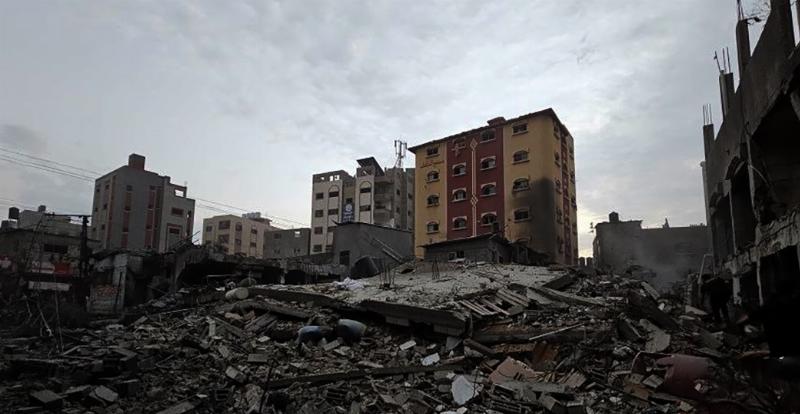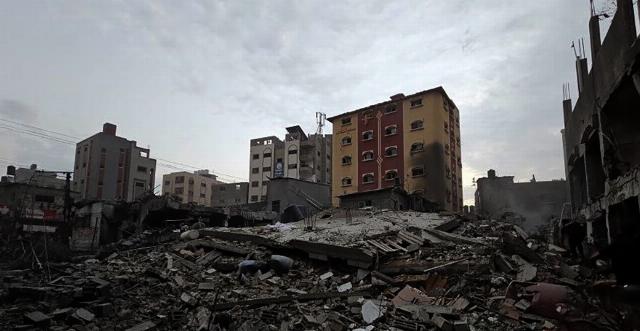


During a recent meeting at the White House, a reporter asked President Trump and Israeli Prime Minister Netanyahu “Do you think there can be a two-state solution that creates an independent Palestinian state?” The question surprised me, since from Israel’s point of view the two-state solution is a dead letter.
There was a time when many, perhaps even a majority, of Israelis believed a two-state solution with the Palestinians was possible. This was the position of every Israeli government for the past 30 years, including Netanyahu’s previous administration. Support in Israel for a two-state solution began dissipating when Arafat launched the first intifada just three months after signing the Oslo Peace Accords. In the decades of relentless Palestinian terror that followed a Palestinian state seemed less and less like a good idea to Israelis and more like national suicide.
The Collapse of Israeli Trust
Yet, even after decades of terrorism, wars, and failed peace talks, a sizable segment of Israeli society still held out hope that separation from the Palestinians could at least bring security and normalcy. That hope was based on the premise that most Palestinians sought a state beside Israel, not instead of it. But that optimistic vision ended on October 7, 2023. Hamas’ brutal assault into southern Israel, killing over 1,200 civilians and taking hundreds hostage, not only triggered a war; it shattered the foundational assumptions underlying the two-state solution. The events of that day buried the two-state solution under the rubble of Israelis’ kibbutzim, their burned-out homes, and their murdered friends and family.
Gaza Proved the Failure of Land-for-Peace
October 7th also marked the final chapter in Israel’s Gaza disengagement experiment. In 2005, Israel unilaterally withdrew from Gaza, removing 10,000 Jewish residents along with all military presence. The goal was to reduce friction and perhaps set the stage for Palestinian autonomy. What followed was the takeover of Gaza by Hamas, the launching of four wars, thousands of rockets, and unrelenting terror. Despite this, many still clung to the idea that further withdrawals from Judea and Samaria might yield better results.
The October 7 atrocities convinced Israelis that any territory given over to the Palestinians would become a launchpad for terror. If Hamas could dig tunnels, manufacture weapons, and stage a mass invasion from the tiny, isolated Gaza Strip, what could happen in Judea and Samaria, which directly overlook Israel’s largest population centers and key infrastructure? Other countries may feel differently, but ultimately Israel has the final say in this matter. She controls the territory in question, and through fifty years of war and terror her enemies have been unable to seize it.
After October 7, the idea of ceding territory seems suicidal to most Israelis. A future Palestinian state is no longer viewed as a potential peace partner, but as a base for the next attack.
Palestinian Leadership Discredited
 A successful two-state solution requires goodwill and responsible, credible leadership on both sides. October 7 destroyed any remaining credibility for Palestinian leadership, including not only Hamas but the Palestinian Authority (PA) as well.
A successful two-state solution requires goodwill and responsible, credible leadership on both sides. October 7 destroyed any remaining credibility for Palestinian leadership, including not only Hamas but the Palestinian Authority (PA) as well.
Hamas revealed its genocidal, jihadist goals and its utter rejection of coexistence. Its charter already made that clear, but its actions on October 7 rendered further debate moot. The PA has proven inept, corrupt, and complicit in terrorism. President Mahmoud Abbas, already unpopular and ruling by decree, failed to condemn the massacre unequivocally. His institutions celebrated the murderers as “martyrs,” while his security forces were unable or unwilling to act against Palestinian terror networks in Judea and Samaria. This further convinced both Israelis and the Trump Administration that there is no Palestinian leadership capable of or willing to enforce peace.
The Palestinian Moral Argument Has Collapsed
The Palestinian narrative rested on the idea of victimhood and dispossession. Those in Israel who felt that story contained elements of truth were forced to confront a darker reality. Clearly the October 7 massacre wasn’t “resistance,” it was barbarism. Attempts to justify or minimize the attack only deepened Israeli cynicism. It became harder to make the argument that Palestinian statehood would lead to peace, as its exterminationist goals became apparent even to those Israelis who previously supported Palestinian statehood.
In the days and weeks following the attack, polls in the West Bank showed high levels of support for the massacre. Celebrations erupted in Palestinian streets. Although Israel offered a large reward for information on the location of hostages not one Palestinian in Gaza stepped forward to offer it. Instead of denouncing the atrocities, Palestinian Authority officials issued ambiguous, equivocal statements.
Hamas executed the massacre with gleeful cruelty. They proudly broadcast GoPro footage of themselves murdering entire families, beheading, burning babies alive, and dragging victims into Gaza. Israelis were forced to reckon with the fact that this absolute evil wasn’t limited to Hamas, but was broadly supported on the Palestinian street.
In truth the two-state solution was always an Israeli and Western self-delusion. Palestinians have never accepted Israel’s right to exist in any borders. The PLO and Hamas charters make this clear, as do unambiguous statements by Palestinian leaders calling for the elimination of Israel. The century-old Palestinian campaign of genocidal terror against the Jews of Israel actually intensified throughout the “peace process.” Their current slogan “From the (Jordan) river to the (Mediterranean) sea” demonstrates once again that Palestinians seek a state in place of Israel, not alongside it.
Regional Realignment
For decades, the two-state solution was the holy grail of international diplomacy in the Israeli-Palestinian conflict. This is still the case in much of the world but significantly not in the Middle East. Arab states — like Saudi Arabia, the UAE, and Egypt have grown weary of Palestinian chaos and rejectionism and now view Hamas (and the entire Iranian “axis of resistance”) as a destabilizing threat to the region. They are moving toward normalization with Israel based on mutual interests — trade, technology, and confronting Iran. The two-state solution, once the primary goal of Arab diplomacy, has become a footnote.
A Post-Two-State Future
October 7 didn’t just kill Israelis, it killed their hopes. It discredited assumptions that had guided those hoping for peace; that Palestinians would accept a Jewish state in any borders, that Palestinian leadership would emerge committed to peace, that peace could be achieved via land concessions. While there is no consensus in Israeli politics on the way forward, nobody other than the extreme left continues to advocate a two-state solution or believes a Palestinian state will ever peacefully coexist with Israel.
With no other choice, Israel has now pivoted toward a doctrine of containment, deterrence, and permanent security control. That may not be ideal. But after October 7, idealism gave way to grim realism. The two-state solution did not die for lack of support internationally or in Israel. It was brutally and intentionally murdered by the Palestinians, who never sought peace to begin with.
DEVIN SPER lived in Israel for 10 years, has a degree in Jewish History from the Hebrew University of Jerusalem and served in the Israel Defense Forces. Mr. Sper is the author of a blog on “The Times of Israel” and of the book The Future of Israel, winner of a 2005 GLYPH award.
Image: Fars Media Corporation
